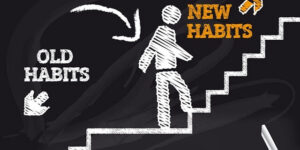No matter who you are or where you’re at in your training journey, a nice back is always something that’s highly sought after.
For most women lifters, a nice toned back with good separation down the middle is the prize (especially if you like backless dresses).
For the guys out there, a wide back with all the creases across the top is the ultimate goal we’re all after.
Making this happen is definitely much easier said than done though. Doing some lat pulldowns, pullups, and rows are a good start but it’s definitely not all that needs to happen to get a complete back.
In fact, most beginner and intermediate lifters are likely missing the mark in getting that look that they’re after, and, more often than not, it a result of making these five common mistakes.

Mistake 1: Missing The Full Picture
When we reference back training most people will think of their lats as the main muscle being worked, and you wouldn’t be wrong to think that but it’s far from the only muscle that makes up your back!
Your back is large and complex and while lats make up a large portion of your back it’s one of six major muscle groups that you could work on. Understanding how these muscles move will help you choose the right exercises for the job.
Back Anatomy
Let’s break down each muscle group and how they move starting from the top and making our way down.

Trapezius
Movement: The Trapezius or “Traps” are the large triangular muscles in the upper back that extend from the base of the neck down between the shoulders. You can break them down further into upper, middle, and lower traps. The main function of the traps is to move your shoulder blades or move the spine when the shoulder blades are stable.
Exercises: Upper Traps – Shrugs. Mid/Lower Traps – Facepulls, Inverted Rows
Rear Deltoid
Movement: The Rear Deltoid or “delts” is technically one of the three shoulder muscles but gets activated a lot during higher rowing movements..
Exercises: Rear Delt Flies, Facepulls, Inverted Rows
Rhomboid
Movement: The rhomboids are found below the traps and are used to pull your shoulders back and squeeze them together.
Exercises: Facepulls, Seated Row, I-Y-W
Latissimus Dorsi
Movement: The latissimus dorsi or lats are the largest muscles on your back and have a wide array of responsibilities including extension and adduction of the shoulder joint. It also gets engaged with other muscles to support various movements (including pressing).
Exercises: Lat Pulldown, Landmine Row, Tall Kneeling Lat Pullin
Teres Major
Movement: The teres major and minor are underneath the lats and are usually recruited in most main movements and doesn’t need to be targeted specifically.
Erector Spinae
Movement: The erector spinae are the muscles that that line your spinal column from the top to bottom. They’re used to flex and extend your spine as well as help support and protect your vertebrae. These will typically get worked with your core training as well since they help with stabilization in most major lifts.
Exercises: Rack Pulls, Farmer’s Carry, Prone Superman, Back Extension
A good training program will focus on attacking all of these different muscle groups 1-3 times each per week and specialization phases will likely focus more heavily on them.
Mistake 2: Can’t Get A Grip
When doing any kind of pulling movement – all back training is some variation of pulling – you use your fingers, wrists, elbows, shoulders, and shoulder blades whenever you bring the weight closer to you. However, you’re only ever as strong as your weakest link! This truism is applicable for all lifts but especially true with back work.
For most people, their grip will give out before their back muscles do which limits the amount of mechanical tension and metabolic stress you can apply to your back muscles leaving with limited results.
Hope is not lost though! Here are a few ways that you can limit the limitations of your grip in any pulling exercises.
Train Your Grip: While your grip will naturally get stronger as you train heavier and more frequently, using a grip trainer throughout the day or just adding some forearm exercises to your program can go a long way for new lifters.
Use A Thumbless Grip: As pictured below, the thumbless grip – also can be referred to as false grip or hook grip – allows you to pull heavier weight without squeezing the bar harder thus reducing hand/forearm fatigue

Pull With Your Elbows: This one sounds weird, but it’s really the best way I can describe it. Instead of focusing on your hands pulling toward you when you train, shift focus to your elbows. Squeeze your elbows and think about moving them closer to your body instead of squeezing your hands and focusing on pulling from there.
Wrist Straps: Not my number one recommendation, but can be incredibly helpful for the more advanced lifter that’s lifting several times the weight that their grip can handle
Mistake 3: Lacking Range
Full range of motion is a fundamental aspect of any exercise you do but unlike other exercises, it can be hard to remember to go through the full range of motion with a pulling exercise.
With pushing exercises, like a bench press, you know when to stop at the full stretch position – it’s where your chest is at – you couldn’t go further even if you wanted to. It’s a good natural stopping point to keep in mind.
With pulling exercises, though, it’s a whole other story, because there’s no clear stopping point. So, what usually happens, is that most people will stop short of the training range, limiting their results.
When rowing or doing a pulldown always be sure to extend the elbows fully (without hyperextending them) and allow your lats, traps, rhomboids, or delts to get a strong stretch with each rep.
Mistake 4: Keeping It Light
Most people are ok with doing heavy loads and lower rep ranges (3-6 Reps) on squats, deadlifts, and pressing movements; but when it comes to pulling they’ll always opt for a moderate or lightweight at 8-15 reps.
See the issue here?
You want a strong/toned back, healthier shoulder, better posture, and even a stronger bench press – then start pulling some heavier weights!
At the very least, aim to have 1 horizontal pull (i.e. seated row or db row) and 1 vertical pull (i.e. pullups or lat pulldown) be heavy each week.
Mistake 5: Leaving Your Back Behind
“What do you mean? My back is always behind me?”
That’s debatable, but I’m not going to start a philosophical debate in this blog right now.
What I mean by leaving your back behind is that, more often than not, people will be activating other muscles more than their back muscles while rowing – biceps being the most common culprit.
This also comes in the form of working the wrong back muscles than intended too!
While a lot of people will try to target their lats in their training, they’ll actually be working their traps, rhomboids, and upper back muscles instead! Essentially leaving the back muscles you’re trying train behind.
There’s an easy fix for both of these though!
If you’re someone that finds themselves feeling their biceps much more than their back, then it’s probably best to switch to a pronated/overhand grip as opposed to a supinated/underhand grip (pictured below). This will still allow you to hit the same back muscles you’re targeting but limits bicep activation.

If you’re someone that finds themselves feeling their upper back way more than their lats, then you would make great use of becoming more mindful of your elbow positioning as you pull.
If you’re looking for max lat activation then it’s best to limit the pull of your elbows to the midline of your body. When you start bringing your elbows behind you, you begin to involve your shoulder blades in the movement. This isn’t inherently bad, but this triggers the upper back muscles like the rhomboids, traps, and rear delts to get worked while your lats don’t get the attention they need.
You can see in the image below the shoulder blades aren’t squeezing together which leads to greater lat activation. This doesn’t mean the image on the left is wrong to do but just suboptimal for max lat activation.

Conclusion
Back training is pretty simple at its core, you’re either pulling from overhead or pulling from in front of you, but making small adjustments to your body positioning and programming can be the difference between the back of your dreams or frustration in the gym.
If you’re looking to take your physique to the next level and would like more in-depth help with your training then schedule a free strategy call with one of our coaches to get started today.







